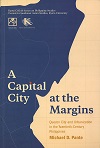Quezon City served as the Philippines’s capital for almost three decades (1948 1976), yet Filipinos today barely remember this historical fact. Was the city, therefore, a failure? This book answers this question by presenting an unconventional historical geography of twentieth-century Quezon City, one that focuses not on its grandiose architecture and master plan but on its boundaries, peripheries, and marginal areas. In so doing, it shows how the city functioned as a buffer zone mediating between city and countryside, and thus developed due to the urban rural overlaps inherent in sociohistorical forces such as colonialism, revolution, agrarian unrest, decolonization, migration, and authoritarianism. Not quite Manila-centric, this book is twentieth-century Philippine history from an off-center point of view.
Contents
List of Figures
List of Maps
List of Tables
Acknowledgments
List of Abbreviations
Introduction: The Contours of a Capital at the Margins
Chapter one: From Cattle Rustlers to Cabaret Dancers
Chapter two: Quezon’s City
Chapter three: Spectral Spaces beyond Balete Drive
Chapter four: Jeprox Ambiguity
Chapter five: The Submissive and Subversive Suburbs
Conclusion: Past, Imperfect, Tense
Notes
References
Index
